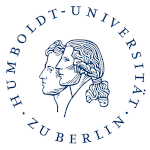Speaker
Prof. Dr. Renate Loll (Radboud U Nijmegen)
Date/Time
Date(s) - 25/11/2022
14:00 - 15:00
Location
IRIS Building, Room 1.221
Researchers in quantum gravity look for a theoretical and quantitative understanding of the dynamics of spacetime near the ultrashort Planck scale, which is believed to be governed by large quantum fluctuations and therefore cannot be described by perturbation theory about solutions to the classical Einstein equations. A powerful nonperturbative methodology is that of “random geometry”, the study of continuum limits of statistical ensembles of piecewise flat simplicial manifolds consisting of equilateral triangular building blocks. While systems of two-dimensional random geometry in Riemannian signature provide analytically soluble toy models and illustrate the viability of the method, physical quantum gravity requires an implementation in four dimensions and Lorentzian signature.
The formulation of Causal Dynamical Triangulations (CDT), which builds on the principles of random geometry, is a quantum-gravitational analogue of what lattice QCD is to nonabelian gauge theory. It has allowed us to move away from formal considerations in quantum gravity to extracting quantitative results on the spectra of invariant quantum observables, describing physics near the Planck scale. A breakthrough result of CDT quantum gravity in four dimensions is the emergence, from first principles, of a nontrivial, nonperturbative vacuum state with properties of a de Sitter universe. I will summarize these findings, highlighting the unusual character of observables in quantum gravity, and describe some of the interesting physical questions that are being explored using the new notion of quantum Ricci curvature.
The formulation of Causal Dynamical Triangulations (CDT), which builds on the principles of random geometry, is a quantum-gravitational analogue of what lattice QCD is to nonabelian gauge theory. It has allowed us to move away from formal considerations in quantum gravity to extracting quantitative results on the spectra of invariant quantum observables, describing physics near the Planck scale. A breakthrough result of CDT quantum gravity in four dimensions is the emergence, from first principles, of a nontrivial, nonperturbative vacuum state with properties of a de Sitter universe. I will summarize these findings, highlighting the unusual character of observables in quantum gravity, and describe some of the interesting physical questions that are being explored using the new notion of quantum Ricci curvature.

